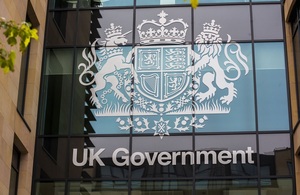February Labour Market Statistics for Scotland 2015
Unemployment in Scotland fell by 5,000 and stands at 162,000 in the period October to December 2015.

The Scottish unemployment rate is 5.8 per cent, which is above the rate of 5.1 per cent as for the whole of the UK, according to Office for National Statistics (ONS) data released today
The labour market statistics also show employment in Scotland increased by 22,000 over the three months October to December 2015. The number of those in employment in Scotland now stands at 2,636,000 – a new record high.
Secretary of State for Scotland David Mundell said:
It is welcome news that there are more people in work in Scotland than ever before, and that economic inactivity has fallen to a new record low. That means more families than ever benefitting from the security of a regular wage, while the National Living Wage, payable from April this year, will mean a pay rise for hundreds of thousands of people in Scotland.
Despite these positive figures there is no room for complacency. The UK and Scottish Governments both have a responsibility to work hard and support the Scottish economy in difficult global conditions, and that is exactly what we must continue to do. The significant package of support announced recently for the North East showed what can be done when we work together with partners for the benefit of Scotland.
The forthcoming Budget will provide us with a further opportunity to help Scotland on its continued transition to a high pay, low tax and low welfare economy.
Headline Statistics for the October to December 2015 quarter:
-
Employment in Scotland increased by 22,000 over the quarter, and by 11,000 over the year, to stand at 2,636,000.
-
The Scots employment rate increased over the quarter to 74.8 per cent. The rate is above the UK average of 74.1 per cent.
-
Unemployment in Scotland fell by 5,000 over the quarter and is up 13,000 over the year. The level now stands at 162,000.
-
At 5.8 per cent, the Scots unemployment rate is above the UK’s rate of 5.1 per cent.
-
Economic activity increased by 17,000 over the quarter and now stands at 2,797,000. Also, the economic activity rate increased over the quarter to stand at 79.5 per cent.
-
In January 2015, the number of people out of work and claiming Jobseeker’s Allowance (JSA) was 60,700 and claimant count, including Universal Credit was 75,000.
Latest Data for Scotland:
Employment
The Labour Force Survey indicates that the number of people in employment in Scotland from October to December 2015 was 2,636,000. Employment was up by 22,000 compared to the previous three months, and was up by 11,000 compared to the same quarter last year. The employment rate was up 0.7 percentage point on the previous quarter, and it was up by 0.4 percentage point compared to the same quarter last year, at 74.8 per cent. In comparison, the Scottish employment rate is above the UK average.
Unemployment
Unemployment in Scotland was down by 5,000 over the quarter October to December 2015 at 162,000. The level was up 13,000 to the same quarter last year. The unemployment rate was down 0.2 percentage point on the previous quarter at 5.8 per cent, which is up 0.4 percentage point over the year.
Jobseeker’s Allowance and Universal Credit
The number of people claiming JSA, decreased by 3,200 from December to 60,700 in January 2016. The level is down by 21,100 on January 2015. The claimant count level (JSA and Universal Credit) is down 1,400 over the month at 75,000 and the rate is unchanged at 2.7 per cent, and is down 0.3 percentage point over the year.
Economic Activity
The number of economically active (defined as those in employment or ILO unemployed, and seasonally adjusted) in Scotland in the October to December 2015 quarter was 2,797,000. This was up 17,000 on the previous quarter, and up 24,000 on the same point a year ago. Among those aged 16-64 the economic activity rate was 79.5 per cent, up 0.6 percentage point on the previous quarter, and up 0.8 percentage point over the year.
Updates to this page
-
make title unique
-
First published.